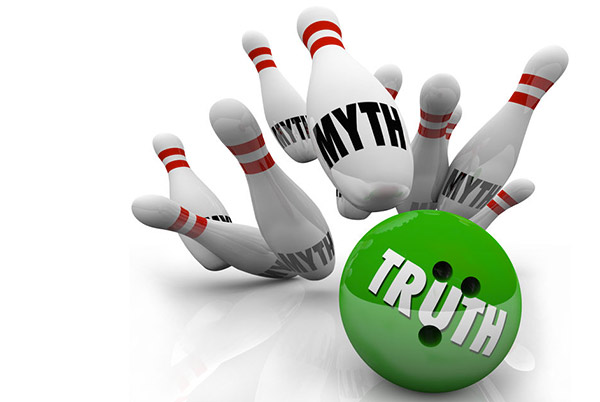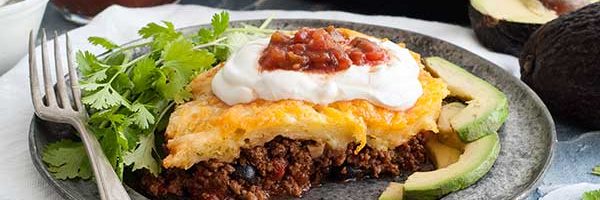
10 Celiac and Gluten Myths Busted
We call on the experts to dismantle misinformation about celiac disease and gluten sensitivity.
Whether you’re just starting the gluten-free diet or you’ve been gluten-free for a while, you’ve likely heard a lot about this special diet, not all of it reliable. Questionable posts on the Internet and dubious advice from well-meaning friends aren’t helpful and may even cause harm.
We asked leading experts to refute some of the most prevalent myths out there. We know you’ve heard them. So here’s the truth—the real deal—about going gluten free.
MYTH #1: If you have celiac disease or gluten sensitivity, you have stomach issues.
FACT: Gastrointestinal symptoms are common with these conditions but some people have little or no GI problems—even when there is damage to the lining of their small intestine.
“Typically, digestive issues, such as abdominal pain, diarrhea, constipation and gas, are seen more often in children,” says Lara Field, RD, a pediatric dietary consultant and owner of FEED (Forming Early Eating Decisions) in Chicago. “Adults with celiac disease or gluten sensitivity typically have other symptoms, including iron-deficiency anemia, osteoporosis, infertility or migraines, to name a few.”
MYTH #2: A few crumbs of gluten won’t hurt you.
FACT: For those with celiac disease, even a few crumbs of gluten are harmful, says Tricia Thompson, MS, RD, founder of glutenfreewatchdog.org. For most, a safe level of gluten is under 20 parts per million.
Suzanne Nelson, MD, MPH, a pediatric gastroenterologist in Glenview, Illinois, says that someone with non-celiac gluten sensitivity may be able to tolerate a small amount of gluten. “Celiac disease requires you to be 100 percent gluten-free, so you don’t run the risk of developing serious complications,” she says. “The research is still evolving with gluten sensitivity. You might be able to ingest small amounts of gluten without harming yourself.”
MYTH #3: It’s okay to try the gluten-free diet without doing any diagnostic testing first.
FACT: Doctors recommend that individuals get tested for celiac disease before they begin the gluten-free diet. Once you’ve started the gluten-free diet, a blood test won’t be able to detect celiac antibodies. This means test results aren’t reliable and you won’t know for sure whether or not you have celiac disease.
“It is important to know if you have celiac disease because it affects how strictly you need to be gluten-free,” Nelson says. “And celiac disease can have long-term health implications that are important to be aware of.” Celiac disease increases the risk of other autoimmune conditions, as well as osteoporosis, anemia, infertility, neurological diseases and, in rare cases, malignancy.
MYTH #4: Non-celiac gluten sensitivity is caused—of course—by gluten.
FACT: Experts aren’t sure. The term gluten sensitivity refers to individuals who don’t have celiac disease but whose symptoms improve while on the gluten-free diet, says Nielsen Fernandez-Becker, MD, clinical assistant professor of gastroenterology and hepatology and associate director of the Celiac Management Clinic at Stanford Hospital. But gluten might not be to blame; it could be a different component of wheat.
“Clearly, more research is needed to sort this out,” she says. “The mechanisms by which gluten causes symptoms are not well understood. It’s not even clear whether gluten is the culprit in this condition. Wheat sensitivity may be a more appropriate name.”
MYTH #5: If you take a gluten-digesting aid before a meal, it’s OK for celiacs to eat some gluten.
FACT: Certain supplements—such as GlutenEase, Gluten Digest and Gluten Freeze—contain an enzyme that can aid in digesting gluten but these should only to be used in addition to a strict gluten-free diet. “The only effective therapy for celiac disease is the gluten-free diet,” Fernandez-Becker stresses. “There are some gluten-digesting enzyme products being developed for therapeutic use but these are meant to supplement dietary gluten exclusion.”
MYTH #6: Spelt is an ancient grain that is naturally gluten-free.
FACT: Spelt is a form of wheat and it is not gluten-free. “Well-intentioned store clerks may tell individuals with gluten-related disorders that they can eat spelt but they are wrong,” Thompson says. “In terms of plant taxonomy—think back to high school biology—spelt is a member of the genus Triticum L., which contains 19 species, including common wheat, durum wheat and spelt. It also includes kamut, freekeh and faro. All these grains are closely related and they should not be eaten by anyone who cannot tolerate gluten.”
MYTH #7: If you test positive for celiac genes, you have celiac disease.
FACT: The genes HLA-DQ2 and HLA-DQ8 appear to be necessary to develop celiac disease. However, these genes are present in about 30 to 40 percent of the general population and only a small fraction develops celiac. “The bottom line is that having these genes doesn’t necessarily mean you have the disease. It just says you are at risk for developing it,” Fernandez-Becker says.
MYTH #8: The gluten-free diet helps you lose weight.
FACT: Many gluten-free processed foods (cookies, muffins and other treats) are made with rice flour, tapioca starch and potato starch, which are low in vitamins, minerals and fiber. “These refined carbohydrates break down quickly and you soon get hungry again,” Field says. “This lack of fiber may lead to overconsumption of refined starches and, likely, weight gain.” In addition, many gluten-free packaged items contain more calories per serving than their wheat-filled counterparts.
MYTH #9: You can’t have celiac disease if you are overweight.
FACT: Underweight, overweight, anyone can have celiac. “People with celiac disease come in all shapes and sizes. It is possible for an overweight or even an obese person to develop celiac disease,” Fernandez-Becker says.
MYTH #10: Gluten can be absorbed through the skin.
FACT: “There is no evidence that this is the case. In order for gluten to trigger inflammation, it has to be ingested,” says Fernandez-Becker. Items like lipstick, lip gloss and chap stick should be gluten free—but don’t toss out your other beauty products yet. Topical products containing gluten, such as shampoo, should be safe, as long as they are not ingested. That being said, some individuals with celiac disease or gluten sensitivity are sensitive to topical gluten and develop a skin or scalp rash or inflammation upon contact. These people should avoid personal care products that contain gluten.
Written by Eve Becker, originally published in Gluten Free & More.



